#Warren Delano
Text

The Great Binge: The Drug-Fuelled “Belle Epoque”
The Belle Époque or La Belle Époque; French for "Beautiful Epoch" is a period of history, usually considered to begin around 1871–1880 and to end with the outbreak of World War I in 1914. It was a period characterized by optimism, peace, economic prosperity, colonial expansion, and technological, scientific, and cultural innovations. In this era of France's cultural and artistic climate (particularly within Paris), the arts markedly flourished, and numerous masterpieces of literature, music, theatre, and visual art gained extensive recognition.

The Bar At Maxim's, Vintage Artwork By Pierre-Victor Galland
The Great Binge refers to the same period spanning 1870 to 1914 in North America. It was coined by modern historian Gradus Protus van der Belt to describe a time when drugs like cocaine, heroin, opium, absinthe, laudanum, and many more were freely available not just from your local pharmacy, tobaconists or the neighbourhood bar, but also from the barbershop, the stationers, and even confectioners.

Morphine by Albert Matignon - 1905

Georges Moreau de Tours - Les Morphinees The Morphine Takers - 1886
Between 1827 and 1842, over 27,000 pounds of opium came into the ports of the United States alone, where the drug found an unexpected distribution network of businessmen, presidential parents, and even Ivy League schools, which all had ties to the Opium trade in the late 19th century.

The Illustrated London News print of the clipper steamship Ly-ee-moon, built for the opium trade, c. 1859
“Princeton’s first large benefactor, John Green, funded his contribution through the opium trade […] Yale University’s infamous Skull and Bone society was funded by the most successful family of opium dealers in America,” reveals Harvard’s magazine, The Crimson, adding that as America’s gateway institution for the drug that soon spread to other Ivy Leagues along the East Coast, “Opium once pervaded campus life at Harvard […] throughout the 1800s, its black smoke kept the university’s veins flowing with green and its faculty and students perpetually dazed.”

The term “pipe dream” actually originates from the opium dens of turn of the century America where people smoking an opium pipe would come up with ideas, theories and fantasies whilst hallucinating.

In 1908, President Roosevelt appointed Hamilton Wright as the first Opium Commissioner in the United States to begin targeting opium dealers. The irony here is that Franklin D. Roosevelt’s grandfather, Warren Delano, was an opium peddler, and his drug trade was responsible for the bulk of the family’s fortune. Roosevelt’s mother, Sara Delano, travelled to Hong Kong with her family to join her opium-trading father in the 1860s.
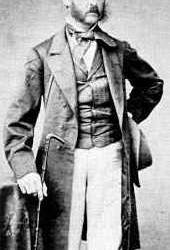
Warren Delano (FDR's grandfather & Opium King)

Sara (FDR's mother) & Philippe Delano in 1864, following their return home from Hong Kong. (Franklin Roosevelt Library)
The crackdown on the Great Binge inevitably began with the signing of the 1912 International Opium Convention to suppress opium smoking and to limit it to medicinal purposes. In the 1920s, in the US, an anti-drug crusade also saw heroin cough drops and cocaine tablets to slowly disappear from stores and bathroom cabinets.
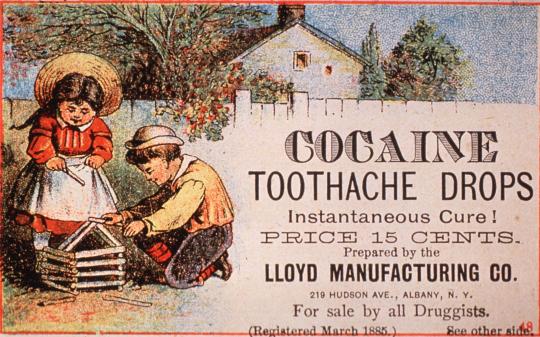
In the 1920s, in the US, an anti-drug crusade also saw heroin cough drops and cocaine tablets to slowly disappear from stores and bathroom cabinets.
During the Great Binge, the most notable drink in circulation was the Vin Mariani, an alcoholic beverage that combined both wine and cocaine.

Angelo Mariani, a French chemist who invented a very popular beverage in 1863.
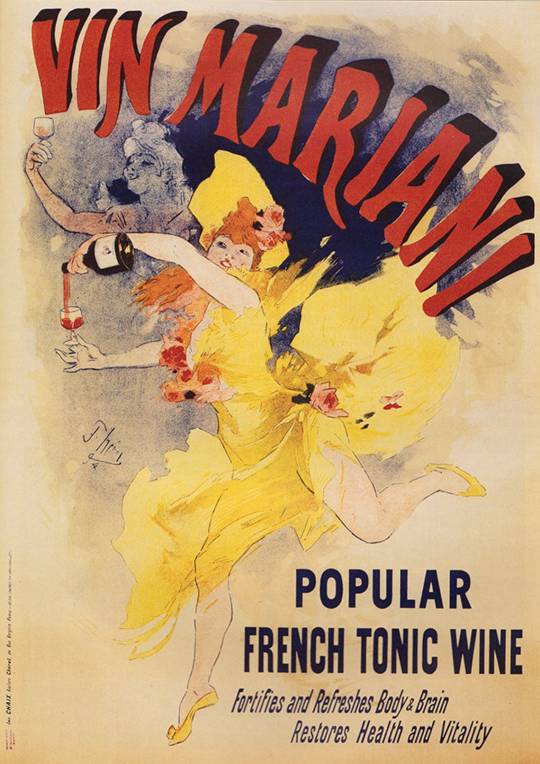
Mariani tonic Wine — lithography by Jules Cheret
The French "Tonic" Wine received endorsements from Pope Leo XIII as well as many of the Belle Epoque’s most famous names, Sarah Bernhardt, Jules Verne and even Queen Victoria were all fans of the drug-infused cocktail.

Pope Leo XIII even allowed his face to be used in Vin Mariani’s marketing campaign. He was very much a brand ambassador, citing that it strengthened him “when prayer was insufficient”.
Mariani's "Tonic" would spent the following century cleaning up its act & rebranding itself to become the world’s most iconic household brand: Coca Cola
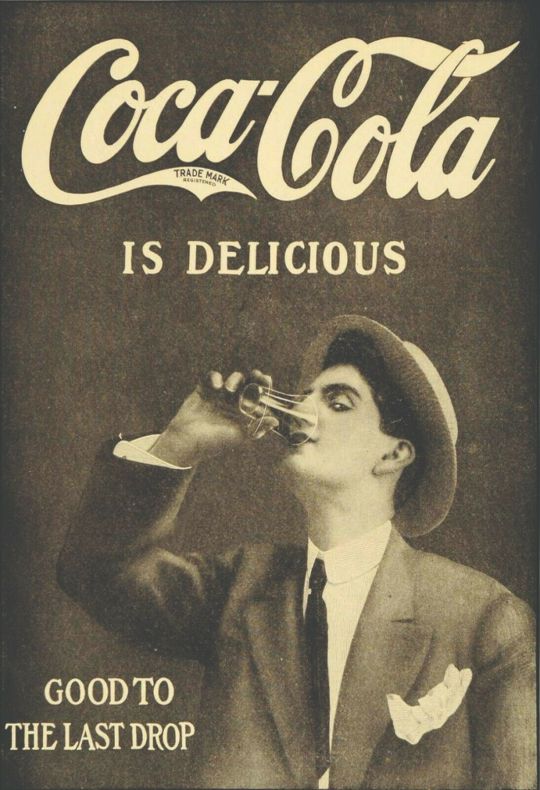
#belle epoque#Beautiful Epoch#paris#Great Binge#cocaine#opium#Morphine#Albert Matignon#Les Morphinees#Georges Moreau de Tours#ivy league schools#Ivy League#Opium trade#princeton#yale#harvard#pipe dream#franklin d. roosevelt#fdr#Warren Delano#Sara Delano#Angelo Mariani#Vin Mariani#Pope Leo XIII#jules verne#queen victoria#coca cola
69 notes
·
View notes
Text

LETTERS FROM AN AMERICAN
October 29, 2023
HEATHER COX RICHARDSON
OCT 30, 2023
On October 29, 1929, the U.S. stock market crashed. It had been rocked five days before, when heavy trading early in the day drove it down, but leading bankers had seen the mounting crisis and moved in to stabilize the markets before the end of the day. October 24 left small investors broken but the system intact. On Monday, October 28, the market slid again, with a key industrial average dropping 49 points.
And then, on October 29, the crisis hit. When the gong in the great hall of the New York Stock Exchange hit at ten o’clock, the market opened with heavy trading, all of it downward. When the ticker tape finally showed the day’s transactions, two and a half hours later, it documented that more than 16 million shares had changed hands and the industrial average had dropped another 43 points.
Black Tuesday was the beginning of the end. The market continued to drop. By November the industrial average stood at half of what it had been two months before. By 1932, manufacturing output was less than it had been in 1913; foreign trade plummeted from $10 billion to $3 billion in the three years after 1929, and agricultural prices fell by more than half. By 1932 a million people in New York City were out of work; by 1933, thirteen million people—one person of every four in the labor force—were unemployed. Unable to pay rent or mortgages, people lived in shelters made of packing boxes.
While the administration of Republican president Herbert Hoover preached that Americans could combat the Depression with thrift, morality, and individualism, voters looked carefully at the businessmen who only years before had seemed to be pillars of society and saw they had plundered ordinary Americans. The business boom of the 1920s had increased worker productivity by about 43%, but wages did not rise. Those profits, along with tax cuts and stock market dividends, meant that wealth moved upward: in 1929, 5% of the population received one third of the nation’s income.
In 1932, nearly 58% of voters turned to Democratic president Franklin Delano Roosevelt, who promised them a “New Deal”: a government that would work for everyone, not just for the wealthy and well connected.
As soon as Roosevelt was in office, Democrats began to pass laws protecting workers’ rights, providing government jobs, regulating business and banking, and beginning to chip away at the racial segregation of the American South. New Deal policies employed more than 8.5 million people, built more than 650,000 miles of highways, built or repaired more than 120,000 bridges, and put up more than 125,000 buildings. They regulated banking and the stock market and gave workers the right to bargain collectively. They established minimum wages and maximum hours for work. They provided a basic social safety net and regulated food and drug safety.
When he took office in 1953, Republican Dwight D. Eisenhower built on this system, adding to the nation’s infrastructure with the Federal-Aid Highway Act, which provided $25 billion to build 41,000 miles of highway across the country; adding the Department of Health, Education, and Welfare to the government and calling for a national healthcare system; and nominating former Republican governor of California Earl Warren as chief justice of the Supreme Court to protect civil rights. Eisenhower also insisted on the vital importance of the North Atlantic Treaty Organization (NATO) to stop the Soviet Union from spreading communism throughout Europe.
Eisenhower called his vision “a middle way between untrammeled freedom of the individual and the demands of the welfare of the whole Nation.” The system worked: between 1945 and 1960 the nation’s gross national product (GNP) jumped by 250%, from $200 billion to $500 billion.
But while the vast majority of Americans of both parties liked the new system that had helped the nation to recover from the Depression and to equip the Allies to win World War II, a group of Republican businessmen and their libertarian allies at places like the National Association of Manufacturers insisted that the system proved both parties had been corrupted by communism. They inundated newspapers, radio, and magazines with the message that the government must stay out of the economy to return the nation to the policies of the 1920s.
Their position got little traction until the Supreme Court’s 1954 Brown v. Board of Education decision declaring segregation in public schools unconstitutional. That decision enabled them to divide the American people by insisting that the popular new government simply redistributed tax dollars from hardworking white taxpayers to undeserving minorities.
A promise to cut the taxes that funded social services and the business regulations they insisted hampered business growth fueled the election of Ronald Reagan for president in 1980. But by 1986 administration officials recognized that tax cuts that were driving the deficit up despite dramatic cuts to social services were so unpopular that they needed footsoldiers to back businessmen. So, Reagan backed the creation of an organization that brought together big businessmen, evangelical Christians, and social conservatives behind his agenda. “Traditional Republican business groups can provide the resources,” leader of Americans for Tax Reform Grover Norquist explained, “but these groups can provide the votes.”
By 1989, Norquist’s friend Ralph Reed turned evangelical Christians into a permanent political pressure group. The Christian Coalition rallied evangelicals behind the Republican Party, calling for the dismantling of the post–World War II government services and protections for civil rights—including abortion—they disliked.
As Republicans could reliably turn out religious voters over abortion, that evangelical base has become more and more important to the Republican Party. Now it has put one of its own in the House Speaker’s chair, just two places from the presidency. On October 25, after three weeks of being unable to unite behind a speaker after extremists tossed out Kevin McCarthy (R-CA), the Republican conference coalesced behind Representative Mike Johnson (R-LA) in part because he was obscure enough to have avoided scrutiny.
Since then, his past has been unearthed, showing interviews in which he asserted that we do not live in a democracy but in a “Biblical republic.” He told a Fox News Channel interviewer that to discover his worldview, one simply had to “go pick up a Bible off your shelf and read it. That’s my worldview.”
Johnson is staunchly against abortion rights and gay rights, including same-sex marriage, and says that immigration is “the true existential threat to the country.” In a 2016 sermon he warned that the 1960s and 1970s undermined “the foundations of religion and morality in the U.S.” and that attempts to address climate change, for example, are an attempt to destroy capitalism.
Like other adherents of Christian nationalism, Johnson appears to reject the central premise of democracy: that we have a right to be treated equally before the law. And while his wife, Kelly, noted last year on a podcast that only about 4% of Americans “still adhere to a Biblical worldview,” they appear to reject the idea we have the right to a say in our government. In 2021, Johnson was a key player in the congressional attempt to overturn the lawful results of the 2020 presidential election.
In his rejection of democracy, Johnson echoes authoritarian leaders like Russia’s Vladimir Putin and Hungary’s Viktor Orbán, both of whom have the loyal support of America’s far right. Such leaders claim that the multiculturalism at the heart of democracy ruins nations. The welcoming of various races and ethnicities through immigration or affirmative action undermines national purity, they say, while the equality of LGBTQ+ individuals and women undermines morality. Johnson has direct ties to these regimes: his 2018 campaign accepted money from a group of Russian nationals, and he has said he does not support additional funding for Ukraine in its fight against Russian aggression.
The rejection of democracy in favor of Christian authoritarianism at the highest levels of our government is an astonishing outcome of the attempt to prevent another Great Depression by creating a government that worked for ordinary Americans rather than a few wealthy men.
But here we are.
After Johnson’s election as speaker, extremist Republican Matt Gaetz of Florida spelled out what it meant for the party…and for the country: “MAGA is ascendant,” Gaetz told former Trump advisor Steve Bannon, “and if you don’t think that moving from Kevin McCarthy to MAGA Mike Johnson shows the ascendance of this movement, and where the power of the Republican Party truly lies, then you’re not paying attention.”
—
LETTERS FROM AN AMERICAN
HEATHER COX RICHARDSON
#Heather Cox Richardson#Letters From An American#MAGA#history#racism#Christian Authoritarianism#Christian Dominionism#Christian Nationalism#Biblical Republic
5 notes
·
View notes
Note
Hiya,
Hope you’re doing well today! Here’s a quick question for you:
🎙️Someone in your field, dead or alive, that youd like to have a conversation with?
Thank you 💗

Hi Loa! Thank you, I hope you're doing well too! 💗 Hmmm either the people at DeepMind who made AlphaFold (AI that predicts protein structure - a notoriously difficult problem to solve in biology) or Warren Lyford DeLano, a bioinformatician who advocated for open source and made the original PyMol, which allows you to visualize molecular structures like this:

it's so pretty, isn't it? 😍😅
Thanks for the ask!
the ask game 🙃
4 notes
·
View notes
Text
Comics Comints 3: Animal Man
Previously on Comics Comments: [The Incal] [Solo Levelling]. (Yeah this name is kind of terrible isn’t it? Part of me is like ‘for god’s sake change it’ and part of me is like ‘commit to the bit’.)
I think you could say I tend to like three different sources of comic. One is webcomics. The second is manga (and also manhwa). The third? Comics written by a wizard in the 1980s.
You see, most of the real ‘classic’ comics from this period are by some sort of wizard. Alan Moore? Famously a magician and really looks the part. Grant Morrison? Chaos magician. Alejandro Jodorowsky? Read the last first post in this series lmao.
It’s not actually all that surprising since comics are an incredibly densely symbolic medium which give you a pretty direct line of attack on the collective unconscious, if you believe in that. Being a wizard is probably pretty good training for writing interesting comics. Or maybe Alan Moore’s success just kicked off a fad of trying to find more British wizards to move comics off the shells at DC - pretty much Morrison’s own account of their introduction into the world of comics.
And that brings us to...
Animal Man
(1988-95, written by Grant Morrison, pencilled Chas Truog, Tom Grummett and Paris Cullins, inked Doug Hazlewood, Mark McKenna, Steve Montano and Mark Farmer, coloured Tatjana Wood and Helen Vesik, lettered by John Costanza and Janice Chiang, covers illustrated by Brian Bolland... phew...)

So. Animal Man! Basically the story as Morrison tells it in the intro to the collected edition is...
In 1987, at the height of the critical acclaim for Alan Moore’s work on SWAMP THING and WATCHMEN, DC Comics dispatched a band of troubleshooters on what is quaintly termed a “headhunting mission” to the United Kingdom. The brief was to turn up the stones and see if there weren’t any more cranky Brit authors who might be able to work wonders with some of hte dusty old characters languishing in DC’s back catalogue. As one of those who received the call that year, I had no idea who I might dig up and revamp. On the Glasgow to London train, however, my feverishly overstressed brain at last lighted upon Animal Man. This minor character from the pages of STRANGE ADVENTURES in the ‘60s had always, for heaven only knows what murky reasons, fascinated me and, as the train chugged through a picturesque language of Tudor houses and smiling bobbies on bicycles, I began to put together a scenario involving an out-of-work, married-with-children third-rate superhero who becomes involved with animal rights issues and finds his true vocation in life.
You can read the full introduction here. It’s pretty funny.
In fact, Morrison is leaving out a little of the story. The ‘headhunting mission’ took place after Alan Moore decisively cut ties with DC over issues related to royalties (particularly for merchandising) and a proposed age-rating system. He stopped writing for them after finishing the last few issues of V for Vendetta, and DC went looking for someone new to fill his niche of ‘left-wing British guy, good at prose, wizard’. Along with Morrison, they found...
Jamie Delano, who was approached by DC as the writer of the Swamp Thing spin off Hellblazer; Neil Gaiman and Dave McKean, who collaborated on the Black Orchid limited series, as well as the famous and acclaimed Sandman; Peter Milligan, who launched a new Shade, the Changing Man series; and Scottish creator Grant Morrison, whose pitch of an Animal Man series was approved. Later British creators to work on American comics include Mark Millar, Warren Ellis, Garth Ennis and Paul Jenkins.
This also comes in a time when American comics are getting more and more literary aspirations: complex characterisation, more naturalistic dialogue, less emphasis on superheroes. Which can perhaps also be attributed to Alan Moore. The ‘British invasion’ might be compared with the rise of gekiga in Japan in the 60s and 70s, although here the change was happening not in alternative magazines like Garo but the most mainstream comics. Putting in a pin in that, because I need to learn more about this period.
I came to Animal Man knowing really only one thing: that it gets increasingly metafictional, culminating in an arc where the protagonist goes and meets Grant Morrison themself. This does indeed happen and it’s cool! But before that a bunch of other stuff has to happen to set up the thematic significance of this metafiction...
What follows: a lot of art and story breakdown.
Morrison is a very interesting figure who I’d like to learn a lot more about. I thought of them as another example of the ‘spend years making sequential art instead of transitioning’ archetype, but it seems maybe a little more complicated than that - I think I need to do more research before I try and say anything definitive about the many noticeable ways trans girls figure in the imagination of comics from this period, and it doesn’t factor much in Animal Man compared to say Doom Patrol.
Indeed, main character Buddy is an almost parodically Normal Dad, a blonde white man living in an American suburban house with a white picket fence and... well, 2 children, not 2.5, but you know.

Into this world comes all sorts of weird stuff because it’s a Grant Morrison comic, and a lot of the humour in the earlier parts of the comic comes from the idea of shining a look at the fringes of the DC universe away from the central superhero battles, with a local low-tier superhero making TV appearances and becoming a minor celebrity. I think ‘everyday life in a world where superheroes are real’ has been done a lot since then, but it’s done well here. Being a superhero for Buddy starts out as just a day job; obscure superhero teams from Morrison’s encyclopedic knowledge of DC comics history are made into obscure superhero teams in-universe as well.
I don’t read American comics nearly as often as I read manga and webcomics - working on filling in the gaps there - so it’s hard for me to comment on Truog’s art in contrast to other comics. Which means what strikes me is probably more traits of ‘American Comics’ than this one specifically, but what ho...
The immediate thing I noticed is the immense anatomical precision, particularly when it comes to drawing muscles - something I’d also been struggling with at the time I read it so I was paying attention lol. Peter Chung made an interesting remark in an interview which I’ll quote here...
I think a lot of illustrators realize—and you see this a lot in American comics as well—that if you draw costumes realistically, it's very difficult. You end up spending all your time trying to create believable drapery. So the tendency is to draw skin-tight costumes that mold around the body. This allows you to use the body more. You see this with classical sculpture, and dancers. You try to use the expressive qualities of the human body more—that's why sculptors prefer to work with nudes, as opposed to trying to make the clothing look accurate. Otherwise you end up concentrating on the clothing and not the person.
Fairly early on, Animal Man’s outfit is updated to include a leather jacket, and there’s a solid sense of how to handle the cloth. Here’s an action scene from fairly early on with Buddy fighting against a rat monster created by the tragic villain B’wana Beast (more on him in a bit)...
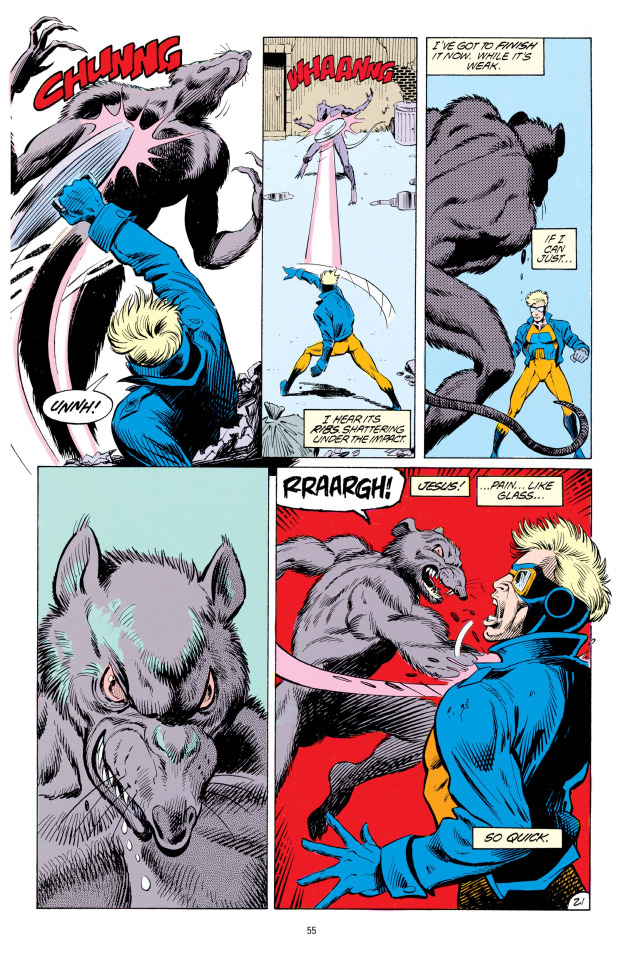
You can see how the cloth stretches at the elbow and bunches up on the inside fold. This also shows a few other aspects of the art: the shading is completely carried by hatching in the linework, with the colours being flat, either pastel or highly saturated. I think this is in part a limitation of the printing technologies of the time. There’s occasional use of screentone, as you can see on the top right panel there (which downscaling has turned into a moiré pattern...)
In comparison to manga, beyond the general differences in character design, it’s interesting to see what’s different in how action scenes are conveyed. The panelling is generally very regular and rectangular, but there will occasionally be layouts with figures overlapping the border. Some of the ways of conveying motion, like dynamic unbalanced poses, or replacing lines with perpendicular hatching, is also widely used in manga; some aren’t, such as the motion arcs you can see in the page above. There usually isn’t a lot of exaggeration or extreme perspective distortion.
I think the colouring weakens it. The colours mostly serve to separate out different volumes, but they don’t really convey much in their own right. Out of curiosity, I tried putting the page above through desaturate and threshold filters to see what it would look like uncoloured. Here’s a threshold, which is what the inked page would look like...
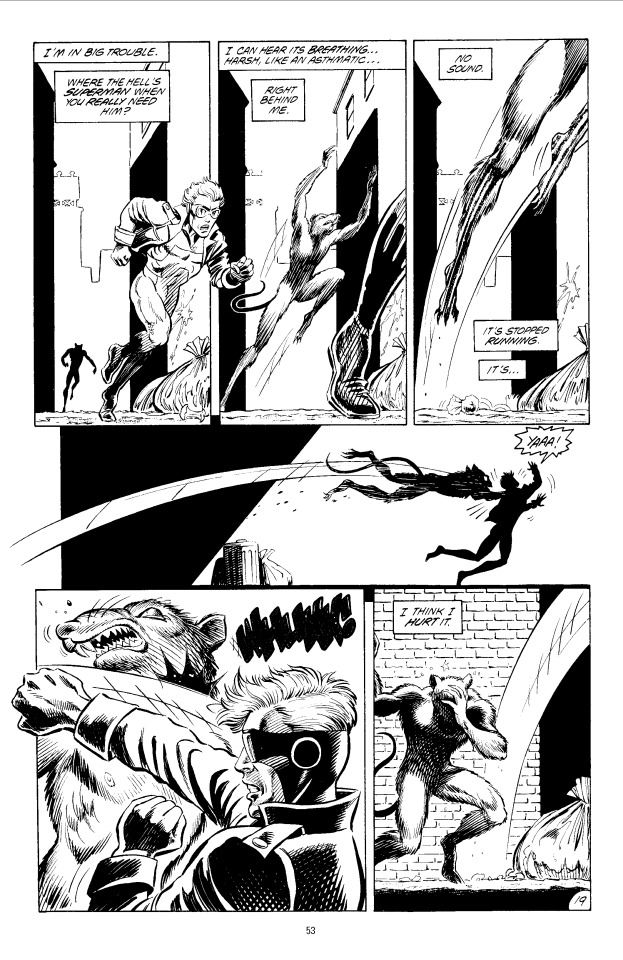
and here’s a desaturate, which replaces the colours with pure value:

So you can see having some values to separate different elements helps, but honestly I think I prefer it desaturated lol. Still, it’s much better than the overly rendered hyper-contrast style that became popular a decade later.
The other big thing that’s different from what I’m used to in manga is the large amount of narration accompanying panels, typically but not always first-person. This is apparently something Alan Moore is responsible for establishing with V for Vendetta. I think the potential drawback with this approach is that your eyes may go straight for the text boxes, and skip the drawings entirely.
There are absolutely good sequences though, such as when Buddy and his friend the physicist
Despite these small complaints, the art generally works very well. Where it gets interesting is later in the comic when things start to get very meta, so you get a character’s deterioriation represented by using unfinished art (sketches or uninked drawings), and later messing with the formal elements like panel borders. There’s a sequence where a highly advanced Buddy fights an evil version of Superman from another timeline during a massive reality breakdown provoked by a character who is aware of all the discarded storylines and timelines in the DC universe and wants to save them, and thus you get pages like this:
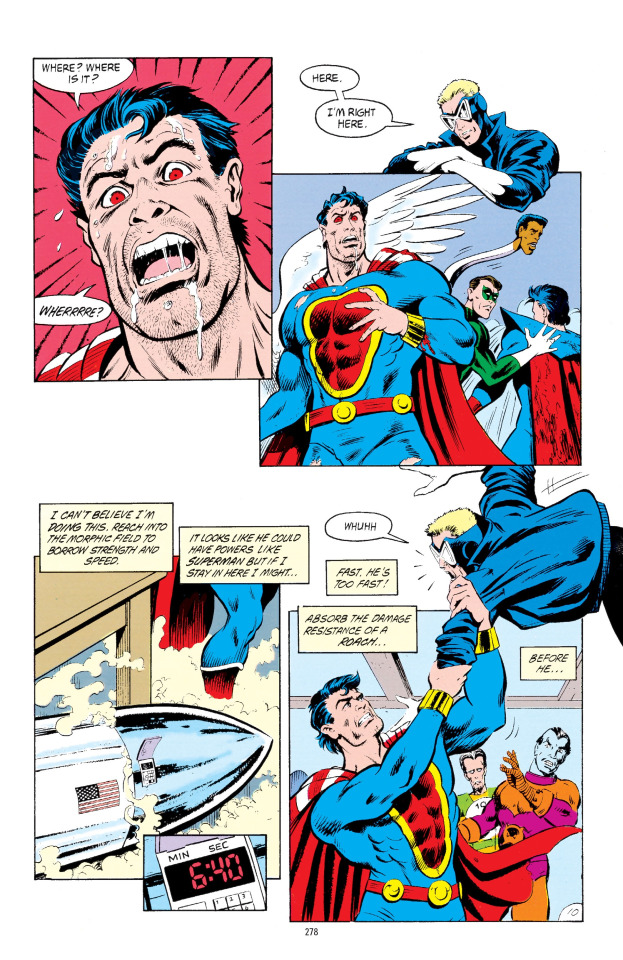
Animal Man’s villains are rarely ever especially villainous, and the tone of a lot of the earlier stories is Buddy finding out about the situation and trying to prevent a tragic outcome and usually failing. Morrison used the comic to some degree to soapbox for animal rights, with early arcs dealing with animal experimentation labs and sadistic dolphin hunters. At one point he even pops by the UK to help out some hunt sabs. But it’s more using this as a source for stories than something purely didactic, and leans into conflicts like Buddy’s ambivalence when his ecoterrorist allies kill a firefighter during an attack on an animal lab as part of a broader arc of his life going to shit; he is, superhero or not, just one man who gets swept up in larger events most of the time.
Speaking of larger events, Morrison’s run on Animal Man coincided with one of DC’s periodic massive crossover events called uhh (*looks up*) Invasion!. Basically a bunch of aliens show up, so Buddy’s helping fight them; then off-screen a ‘gene bomb’ goes off which scrambles Buddy’s powers. (This also played into Morrison’s run on Doom Patrol, which I’m still reading at the moment, so more on that in the future!) The storylines associated with this event - one about an alien artist who wants to terraform the Earth, the other about a washed-up suicidal supervillain - are both good, and ‘aliens show up’ is really not far outside the usual sort of things that happen in Animal Man, but it’s funny that Grant Morrison, at the time ‘just’ an up-and-coming new writer at DC comics, is now probably the only reason that this whole event is still remembered in 2022.
Anyway, let’s get into the metafiction stuff. The story is full of DC deep cuts, and Morrison seems to be very interested in how fictional characters are constructed, how they relate to their readers, how their stories are affected by the outside world...

The first movement in this direction is the story about Wile E. Coyote, which sees him rebel against God for creating a life of ceaseless violence for cartoon animals - only to be punished by incarnating him as a werewolf in the real world. Over the course of that story, Wile E. Crafty is run over, shot, crushed, and blown up, becoming a kind of Jesus-like figure whose suffering is supposed to save the animals. It’s a wonderfully batshit idea, and it works well in context - apparently this comic sold like mad so Morrison was encouraged to take it further. Animal Man’s role in this story - as in quite a lot of stories - is to witness Crafty’s death.
Thus over the course of Animal Man, we encounter a pair of aliens who find that the general trends in comic writing of the day - the emphasis on more complex characterisation for example - is increasingly straining the fabric of fictional reality...

The aliens stage an intervention to try and use Buddy’s memories to repair the timeline (or something??), but this ends up unleashing more chaos down the line, as more and more characters start attaining a fourth-wall breaking awareness. The next arc sets up some unexplained weirdness: a strange ghostly figure of Buddy attempts to communicate with his family, while meanwhile we’re introduced to the character of Highwater, a Native physicist who’s drawn into the mystery of an Arkham Asylum patient who seems to (for our outside eyes) have fourth-wall breaking knowledge.
So after the incident with the aliens, Buddy meets up with Highwater, and they go into the desert and have a peyote trip which leads to some fun imagery, hero gets power up. Meanwhile, government/corporate goons kill Buddy’s family. He gets back, and we find out the cause of the ghostly Buddy: distraught, he tries to time travel back to save them, but when his means of time travel doesn’t make that possible. The guy from Arkham Asylum meanwhile summons a bunch of DC characters from various discarded storylines and alternate universes; the aliens intervene, and Highwater ends up sealing it all off again, in the process becoming a mute Arkham inmate.
Buddy demands answers from the aliens, but they peace out; nevertheless he finds a strange door which takes him to a metafictional plane where he can - much like good old Crafty! - go and demand explanation from his creator. He soon finds discarded fictional characters in a realm where nothing can form stories, and is given a dying monkey with a typewriter that’s writing the comics script, and instructed to carry the monkey to the mythical city of ‘Formation’. (So I guess it’s still kind of animal related!)
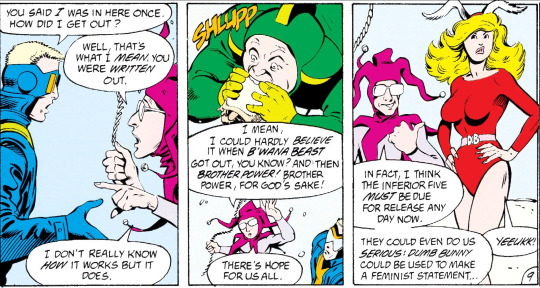
But like all the other people Buddy couldn’t save, the monkey dies, and his journey takes him back to the start. After all this he finally gets to meet Grant Morrison!
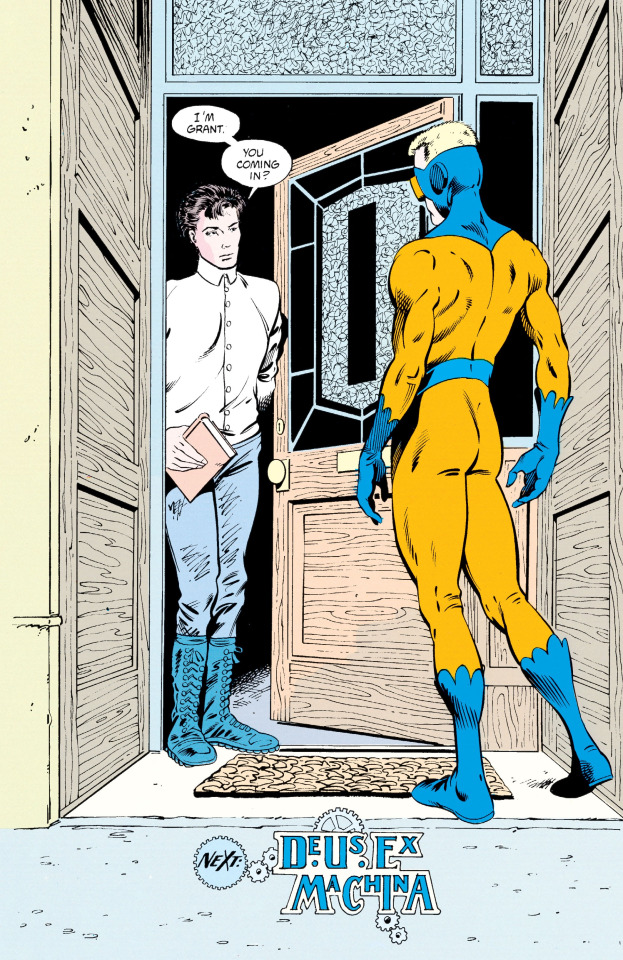
The final issue has Morrison talking to both Buddy and the reader - giving acknowledgements, telling the story of their childhood imaginary friend Foxy, and explaining the craft of comics-making to Buddy and musing on the differences between comics life and real life.
Which is a fun little dialogue, because while it is drawing our attention to the constructed and arbitrary nature of everything in the story, it also at the same time has to function as a story. Buddy’s reactions - panicked incomprehension, questioning - have to continue to feel natural. Even though the comic is turning to us and saying ‘this man is fake’, it does its level best to cue us to think he’s real.
I like metafiction, but after you’ve handled the ‘character discovers they’re fictional’ scene, you need to figure out what it’s actually for. In this case, it’s part of the comic’s general theme of powerlessness and futility. Here’s the key page:

...which literally leads to a panel where Morrison turns to the camera and tells you to join PETA, something that hasn’t aged especially well. Morrison agonises a bit over why we use real death and suffering as entertainment - why they’d think about using their own cat’s death as material for this story - and then leaves, resurrecting Buddy’s family on the final panel.
So! Long summary over (thanks for bearing with me, I wanted to get it all straight in my head).
At this point, ‘fictional characters discover they are fictional’ is a pretty heavily done narrative, so you have to have some kind of very strong reason to use the device. I think that was way less true in the 80s - Italo Calvino’s novel If on a winters night a traveler was only published ‘79 after all!
In this case, its use is to provide a little reflective monologue on 1. living in a cruel and nihilistic world, in contrast to fictional characters who have a creator they can confront 2. Morrison’s position as an outside writer being pulled into the vast machine of the DC universe. Their intervention is... an interesting kind of critical, seeking to update rather than simply write out dubious past storylines, so the story acts as a kind of critical commentary on its predecessors. This is most apparent in one storyline which sees the old character B’wana Beast, a Tarzan-like figure who gets animal powers from a special helmet and is known as the ‘White God’, passing on his powers to a Black anti-apartheid activist. A lot of others simply deal with nostalgia, getting older, the world moving on and becoming more complicated.
Morrison describes their final storyline as an anticlimax. Which like... on the one hand, how could it possibly be? Buddy has uncovered the truth that no character in the setting can know. But on the other hand, by heavily emphasising everything is arbitrary, it does indeed dismantle the tension; there is no way it could be anything other than a final storyline.
Buddy spends much of his narrative under Morrison being unable to do more than stand by as terrible things happen around him. He tries extremely hard to be caring and empathetic, and this is often appreciated but rarely enough to save anyone. In the end he ‘realises’ that ‘he’ has even less power than that - he’s just an instrument of Morrison and whichever next writer (who would apparently choose to turn it into a story about quantum mechanical weirdness, but I stopped at the end of Morrison’s run) so not only are his efforts futile, even his motivation is also not under his control. All pretty solid as far as ‘pseudo-existential’ stories (in Buddy’s words) go.
And yet, as Morrison notes in their conversation, ‘Buddy’ will likely outlive Morrison themselves. To elaborate on that, we can see the figure of ‘Buddy’ conjured in our minds by the prompt of this book lasting as long as it continues to be printed, read, and iterated on - a meme, egregore, etc. etc.. This is the very hollow form of ‘life’ given to dead people who pass into memory, but it isn’t nothing; to create a character who’s not forgotten is quite an achievement.
Morrison’s theme of limited, even disabled characters for whom things never seem to go quite right is the whole impetus of Doom Patrol, so I guess I’ll pick up this thread when I finish digesting that one. Even so early in their career, they’re a very witty writer with a real knack for coming up with compelling, thematic scenarios and convincing characterisation. (Morrison had been writing comics in the UK for 5-6 years before that, so it’s hardly like this is the first time they wrote for a comic, but they were still younger than me at the point they began Animal Man.)
All in all, Animal Man is a compelling story that still holds up very well in 2022. If you want to read it, ComicExtra has the most complete collection of scans I found - scroll down to the 30th anniversary deluxe edition, which is annoyingly uploaded in reverse order.
Next up we’ll be doing a manga! I recently caught up with the absolutely delightful Witch Hat Atelier by Kamome Shirohama, and I can’t wait to dig into all the brilliant techniques she’s using in the art of this manga. See you then.
18 notes
·
View notes
Text
1 George Washington - GRYFFINDOR
2 John Adams - RAVENCLAW
3 Thomas Jefferson - RAVENCLAW
4 James Madison - RAVENCLAW
5 James Monroe - HUFFLEPUFF
6 John Quincy Adams - RAVENCLAW
7 Andrew Jackson - SLYTHERIN
8 Martin van Buren - SLYTHERIN
9 William Henry Harrison - GRYFFINDOR
10 John Tyler - GRYFFINDOR
11 James Polk - SLYTHERIN
12 Zachary Taylor - GRYFFINDOR
13 Millard Fillmore - HUFFLEPUFF
14 Franklin Pierce - GRYFFINDOR
15 James Buchanan - SLYTHERIN
16 Abraham Lincoln - GRYFFINDOR
17 Andrew Johnson - SLYTHERIN
18 Ulysses S. Grant - GRYFFINDOR
19 Rutherford B. Hayes - GRYFFINDOR
20 James Garfield - GRYFFINDOR
21 Chester Arthur - RAVENCLAW
22 Grover Cleveland - GRYFFINDOR
23 Benjamin Harrison - GRYFFINDOR
24 Grover Cleveland - GRYFFINDOR
25 William McKinley - SLYTHERIN
26 Theodore Roosevelt - GRYFFINDOR
27 William Howard Taft - RAVENCLAW
28 Woodrow Wilson - RAVENCLAW
29 Warren Harding - SLYTHERIN
30 Calvin Coolidge - GRYFFINDOR
31 Herbert Hoover - GRYFFINDOR
32 Franklin Delano Roosevelt - RAVENCLAW
33 Harry S. Truman - GRYFFINDOR
34 Dwight Eisenhower - GRYFFINDOR
35 John F. Kennedy - GRYFFINDOR
36 Lyndon B. Johnson - SLYTHERIN
37 Richard Nixon - SLYTHERIN
38 Gerald Ford - GRYFFINDOR
39 Jimmy Carter - HUFFLEPUFF
40 Ronald Reagan - SLYTHERIN
41 George H. W. Bush - SLYTHERIN
42 William Jefferson Clinton - HUFFLEPUFF
43 George W. Bush - HUFFLEPUFF
44 Barack Obama - RAVENCLAW
45 Donald Trump - SLYTHERIN
46 Joseph Biden - HUFFLEPUFF
0 notes
Text
National Grandparents Day
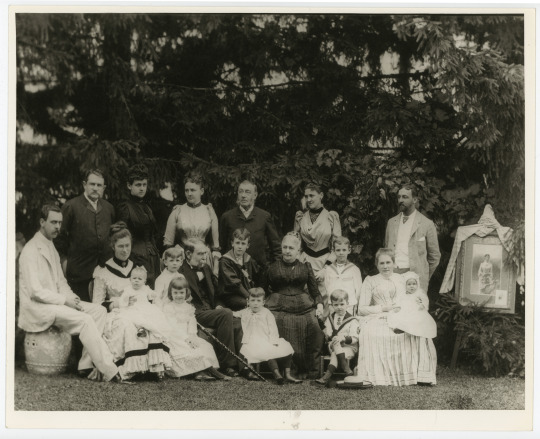
📷NPx 47-96:14
FDR with the Delano family at Algonac for his maternal grandfather Warren Delano's 81st birthday, July 13, 1890. FDR is sitting between his grandfather and his grandmother, Catherine Robbins Lyman Delano.

Artist William West painted this portrait of FDR's grandmother Catherine shortly before their marriage in 1843. Learn more on our Digital Artifact Collection: https://fdr.artifacts.archives.gov/objects/13883
#national grandparents day#grandparents#fdr#franklin d. roosevelt#james roosevelt#sara delano roosevelt#warren delano#catherine robbins lyman#algonac#1890s
8 notes
·
View notes
Text
What your favorite US President says about you (part iii)
Benjamin Harrison: You thought I said Benjamin Franklin
William McKinley: You are a gilded age billionaire, playboy, philanthropist
Theodore Roosevelt: Your spirit animal is Ron Swanson
William Howard Taft: You like and understand the Judicial Branch
Woodrow Wilson: You wish every country was like ‘Murcia
Warren G. Harding: You like to pick out the worst people
Calvin Coolege: You wish the 2020s were the 1920s
Herbert Hoover: You like dams
Franklin D. Roosevelt: You love the Great Depression, WWII, or Eleanor, either way we all know he was a great leader, that’s why he got elected 4 times
Harry S. Truman: You like to drop bombs
Dwight D. Eisenhower: You are boomer who likes WWII and the 1950s
#us history#history#ap us history#us prestidents#apush#us history memes#history meme#history memes#benjamin harrison#william mckinley#theodore roosevelt#teddy roosevelt#william howard taft#woodrow wilson#warren g harding#calvin coolidge#herbert hoover#franklin delano roosevelt#franklin d roosevelt#fdr#harry truman#dwight d. eisenhower
41 notes
·
View notes
Text
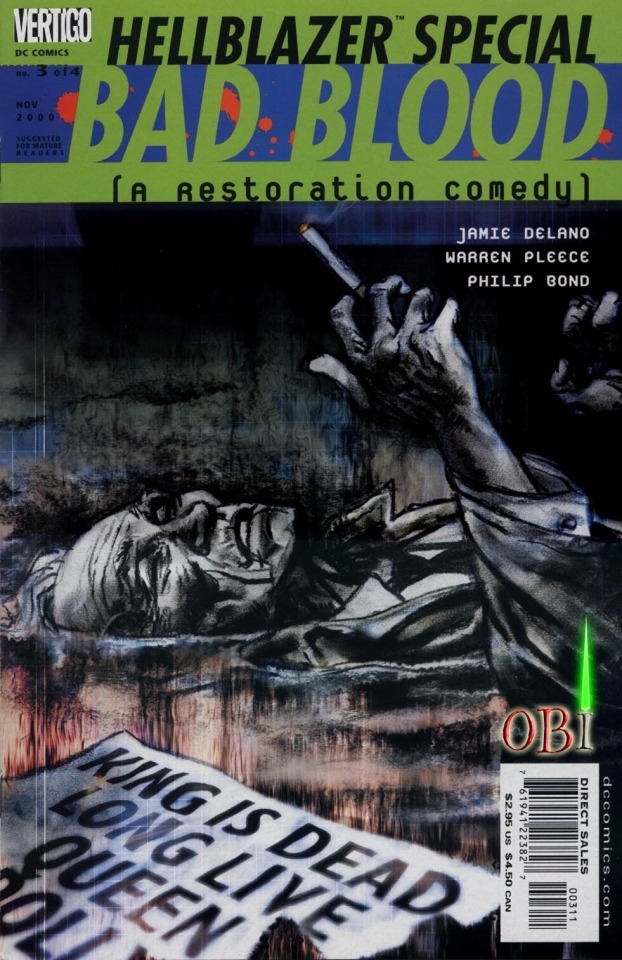
Hellblazer Special: Bad Blood #3 cover 2000. Art by Sean Phillips.
#dc comics#vertigo#vertigo comics#hellblazer#john constantine#sean phillips#jaime delano#warren pleece#philip bond
31 notes
·
View notes
Photo

2020 Visions
Volume: 1 #6
La Tormenta, Part Three
Writers: Jamie Delano
Pencils: Warren Pleece
Inks: Warren Pleece
Colours: James Sinclair, Digital Chameleon
Covers: John Eder
Featuring: Jack Atlanta, Hector Cunoz
Vertigo
#2020 Visions#Jack Atlanta#Hector Cunoz#Vertigo#Jamie Delano#Warren Pleece#James Sinclair#Digital Chameleon#John Eder#Comics
3 notes
·
View notes
Photo

“Popsat Cameras Get It All”
Hellblazer Special: Bad Blood #4 (December 2000)
Jamie Delano, Warren Pleece, Philip Bond and Pamela Rambo
Vertigo / DC Comics
#Hellblazer Special#Bad Blood#John Constantine#Jamie Delano#Warren Pleece#Philip Bond#Pamela Rambo#Vertigo Comics#DC Comics#Great Comics#Great Comic Art#Dollar Bin Finds#Popsat Cameras Get It All
3 notes
·
View notes
Text
HEATHER COX RICHARDSON
April 12, 2022 (Tuesday)
On April 12, 1945, a visibly exhausted President Franklin Delano Roosevelt jerked in his chair while having his portrait painted in Warm Springs, Georgia. FDR put his hand up, said "I have a terrific pain in the back of my head," and lost consciousness. He died of a massive cerebral hemorrhage within hours.When FDR entered the White House in 1933, he undertook to rebuild the nation after Republicans had run it into the ground.
Believing that businessmen were the engine that drove the economy and that any government regulations or taxes that hampered them would hurt growth, Republicans under presidents Warren G. Harding, Calvin Coolidge, and Herbert Hoover had slashed taxes and regulations. The superheated economy boomed, but real wages stagnated, and the profits from dramatically improved production all went to the top 1% of the economy.
When spokespeople tried to point out that the new economy shut farmers, immigrants, and minorities out, Republicans accused those groups of falling behind because they were lazy. But then, in October 1929, the stock market crashed and the Roaring Twenties stopped dead. People lost their jobs, their homes, and their hope.
In the presidential election of 1932, desperate voters threw the Republicans out of office and put in Democrats, led by former New York Governor Franklin Delano Roosevelt. FDR recognized that the economic crisis created by unfettered capitalism threatened to end democracy forever as starving Americans turned either to communism or to fascism, as Europeans were doing. FDR understood that to preserve democracy and the economic system on which it rested, the government must regulate business, protect workers, and provide a basic social safety net.
His "New Deal for the American people" did exactly that, and it helped Americans weather the Depression until the extraordinary deficit spending of WWII ended it altogether.Ordinary Americans celebrated a government that worked for everyone, rather than just the rich. And on April 13, they mourned the man who had piloted the country through that transition.
21 notes
·
View notes
Note
ask meme: bluegrass fandom go on do it i dare you
nghnghnfhghfnghgnfijgjfdndhgnf you had to ghfnfgh
gnfhgnfhdnhghgae;rojg okay okay okay I guess we're doing this
Context / info given for all poor readers wondering who the flip flap dippity dap I'm talking about.
Send me a fandom and I’ll tell you my
blorbo (favorite character, character I think about the most) From Flatt & Scruggs: Earl Eugene Scruggs, his thick black eyelashes, and his dorky gap-toothed grin. Earl Scruggs and his soulful, earthy, expertest banjo picking that makes me react ferally (in ways no other banjo picker can do for me... look, he's the Father of Bluegrass Banjo!!! We're all playing after Earl to an extent!). Earl Scruggs, the inspiration for why I have a banjo sitting next to me rn. That Earl.
I know way too much information about his life, don't test me, it's bad, it's endless Scruggs lore, I won't shut up for five months.

scrunkly (my “baby”, character that gives me cuteness aggression, character that is So Shaped) From the Del McCoury Band: Delano Floyd McCoury, who has the happiest smile-laugh ever. Look at his squint! He's so squinty! Every time I see a photo, I smile back until my cheeks hurt. Del is the human personification of a hug. Unlike other folks I've listed, Del's alive and touring (at the young age of 83). He's a vital living link to traditional bluegrass and earlier years of the genre.

Another scrunkly is Burkett Howard Graves, better known as Uncle Josh from Flatt & Scruggs, *THE* dobro player who developed the technique and inserted the instrument first in bluegrass, a fun comedian, and not sore on the eyes. ;)
Oh right, and literal tiny child Marty Stuart in Lester Flatt’s band is a GIFT.
scrimblo bimblo (underrated/underappreciated fave) From Flatt & Scruggs: Dorris Paul Warren! There were tons of extraordinary early bluegrass fiddlers. But Paul does not get enough recognition and respect for being one of *THE* most-heard bluegrass fiddlers, member of the highest profile group (Flatt & Scruggs) for decades. Our relative lack of public biographical information is a travesty. A TRAVESTY I SAY!!!!

Also on this list: English Tullock Jr. (Cousin Jake) from Flatt & Scruggs, because badass bassists deserve more love; Rob McCoury, the banjo picker from the Del McCoury Band; and Wilma Lee Cooper, who has a BIG VOICE and dominated vocals in the early years when (what we now call) bluegrass was like 99.5% male.
glup shitto (obscure fave, character that can appear in the background for 0.2 seconds and I won’t shut up about it for a week) Gary Scruggs, eldest son of Earl Scruggs. He did not get the public love and attention that Earl's middle son, Randy, got. I am president of the Give Gary Appreciation Committee. Look, if you can't appreciate his sexy pose and sword, we can't be friends.
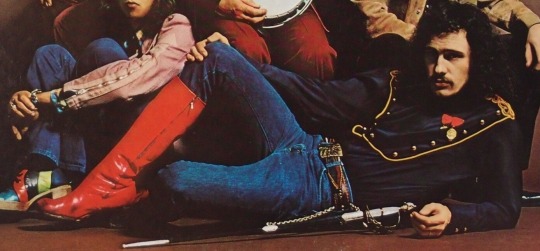
poor little meow meow (“problematic” / unpopular / controversial / otherwise pathetic fave) Jimmy Martin falls here, as does Carter Stanley of the Stanley Brothers. Both were well-recognized for lead singing, but made interesting life choices. Jimmy Martin was a CHARACTER, the type of obnoxious butthead you'd laugh at from a distance but hate irl. Carter unfortunately had drinking problems, but his social personality was endearing. I love his loyalty to baby brother and music partner Ralph through everything. Like, it's movie-worthy loyalty. THEY MADE A PLAY ABOUT HIM!!!
If we go out of bluegrass and mention traditional country, gotta shout "Hank Williams".
horse plinko (character I would torment for fun, for whatever reason) Does this count? Regarding Father of Bluegrass Bill Monroe, whom others revere to a nearly religious level? I like to call him Daddy Boi Billiam. And other things that'd make him roll in his grave. Look, he's the reason we're all here, his music composition skills are top notch, and his decades and decades of ever-improving work is unparalleled...... but he was human, and I like making glib comments to keep him off the collective pedestal.
Saying obnoxious, cheeky things would be enough to torment this stoic man. So it counts. I want to make him squirm.
eeby deeby (character I would send to superhell) I... have conflicting thoughts about Louise Scruggs, manager of Flatt & Scruggs. On one hand, I respect her unparalleled business acumen that led the band to international fame. She's historic as the first woman in her field, too, for country music. But I also... she... there's... stories... of business decisions she made that I find cold. I also put her as largely responsible for why Flatt & Scruggs's music output diminished in quality during the 1960s and why Flatt & Scruggs broke up. So I guess her? Doesn't feel nice for me to say, though.
Oh. Oh wait. John Duffey from the Country Gentlemen / The Seldom Scene pings me wrong. I guess him. Multiple famous bluegrass blokes made comment about his pranks feeling "mean," him acting too arrogantly for his skill level, etc. Don't get me wrong, he was a remarkable tenor vocalist. But yeah. From what little I know of him.
#ask and you shall receive in overabundance to a level of detail no one wants#long post#that banjo business#thatbanjobusiness#fandom meme#meme#non-dragons#ask#ask me#how dare you fury#and I love you fury
8 notes
·
View notes
Text
Iggy’s Big Ass Hellblazer Reading List (Vertigo series only, the one with 300 issues)
Okay ladies, gentlemen, and non-binary hotties, Here’s my possibly much more intimidating full reading list, highlighting iconic and personal favourite authors. The thing to understand before starting Hellblazer is that it’s a consecutively running series. It changes writers frequently but they pick it up as a round robin narrative. Continuity is fairly well upheld. I will make no bones about disliking two authors in particular, though thankfully, you can skip over both without losing anything of value.
So, here's the break down:
Jaime Delano: 1-24, 33-40, 84
Neil Gaiman: 27
Garth Ennis: 41-50, 52-83, 129-133
Paul Jenkins: 89-128
Warren Ellis: 134-143
Mike Carey: 175-215, 229
Denise Mina: 216-228
Andy Diggle: 230-244, 247-249 There's a wee break in his run for a two parter by Jason Aaron, that's 245 & 246 and utterly brilliant
#I left out a few one shots not because they're bad#but because I'm simply focusing on more prolific/iconic writers that had a hand in shaping John's character or canon in a significant way#iggy's hellblazer reading guide
5 notes
·
View notes
Link
LETTERS FROM AN AMERICAN
September 3, 2021
Heather Cox Richardson
The new anti-abortion law in Texas is not just about abortion; it is about undermining civil rights decisions made by the Supreme Court during the 1950s, 1960s, and 1970s. The Supreme Court declined to stop a state law that violates a constitutional right.
Since World War II, the Supreme Court has defended civil rights from state laws that threaten them. During the Great Depression, Democrats under President Franklin Delano Roosevelt began to use the government to regulate business, provide a basic social safety net—this is when we got Social Security—and promote infrastructure. But racist Democrats from the South balked at racial equality under this new government.
After World War II, under Chief Justice Earl Warren, a Republican appointed by President Dwight Eisenhower, and Chief Justice Warren Burger, a Republican appointed by Richard Nixon, the Supreme Court set out to make all Americans equal before the law. They tried to end segregation through the 1954 Brown v. Board of Education of Topeka, Kansas, decision prohibiting racial segregation in public schools. They protected the right of married couples to use contraception in 1965. They legalized interracial marriage in 1967. In 1973, with the Roe v. Wade decision, they tried to give women control over their own reproduction by legalizing abortion.
They based their decisions on the due process and the equal protection clauses of the Fourteenth Amendment, passed by Congress in 1866 and ratified in 1868 in the wake of the Civil War. Congress developed this amendment after legislatures in former Confederate states passed “Black Codes” that severely limited the rights and protections for formerly enslaved people. Congress intended for the powers in the Fourteenth to enable the federal government to guarantee that African Americans had the same rights as white Americans, even in states whose legislatures intended to keep them in a form of quasi-slavery.
Justices in the Warren and Burger courts argued that the Fourteenth Amendment required that the Bill of Rights apply to state governments as well as to the federal government. This is known as the “incorporation doctrine,” but the name matters less than the concept: states cannot abridge an individual’s rights, any more than the federal government can. This doctrine dramatically expanded civil rights.
From the beginning, there was a backlash against the New Deal government by businessmen who objected to the idea of federal regulation and the bureaucracy it would require. As early as 1937, they were demanding an end to the active government and a return to the world of the 1920s, where businessmen could do as they wished, families and churches managed social welfare, and private interests profited from infrastructure projects. They gained little traction. The vast majority of Americans liked the new system.
But the expansion of civil rights under the Warren Court was a whole new kettle of fish. Opponents of the new decisions insisted that the court was engaging in “judicial activism,” taking away from voters the right to make their own decisions about how society should work. That said that justices were “legislating from the bench.” They insisted that the Constitution is limited by the views of its framers and that the government can do nothing that is not explicitly written in that 1787 document.
This is the foundation for today’s “originalists” on the court. They are trying to erase the era of legislation and legal decisions that constructed our modern nation. If the government is as limited as they say, it cannot regulate business. It cannot provide a social safety net or promote infrastructure, both things that cost tax dollars and, in the case of infrastructure, take lucrative opportunities from private businesses.
It cannot protect the rights of minorities or women.
Their doctrine would send authority for civil rights back to the states to wither or thrive as different legislatures see fit. But it has, in the past, run into the problem that Supreme Court precedent has led the court to overturn unconstitutional state laws that deprive people of their rights (although the recent conservative courts have chipped away at those precedents).
The new Texas law gets around this problem with a trick. It does not put state officers in charge of enforcing it. Instead, it turns enforcement over to individual citizens. So, when opponents sued to stop the measure from going into effect, state officials argued that they could not be stopped from enforcing the law because they don’t enforce it in the first place. With this workaround, Texas lawmakers have, as Justice Stephen Breyer noted in his dissent, “delegate[d] to private individuals the power to prevent a woman from…[exercising]...a federal constitutional right.”
Justice Sonia Sotomayor was more forceful, calling the measure “a flagrantly unconstitutional law engineered to prohibit women from exercising their constitutional rights and evade judicial scrutiny.” And yet, the Supreme Court permitted that state law to stand simply by refusing to do anything to stop it. As Sotomayor wrote in her dissent: “Last night, the Court silently acquiesced in a State’s enactment of a law that flouts nearly 50 years of federal precedents.”
A state has undermined the power of the federal government to protect civil rights. It has given individuals who disagree with one particular right the power to take it away from their neighbors. But make no mistake: there is no reason that this mechanism couldn’t be used to undermine much of the civil rights legislation of the post–World War II years.
On September 4, 1957, three years after the Brown v. Board of Education decision, a crowd of angry white people barred nine Black students from entering Central High School in Little Rock, Arkansas. The white protesters chanted: “Two, four, six, eight, we ain’t gonna integrate.”
In 1957, Republican President Dwight Eisenhower used the federal government to protect the constitutional rights of the Little Rock Nine from the white vigilantes who wanted to keep them second-class citizens. In 2021, the Supreme Court has handed power back to the vigilantes.
—-
Notes:
https://www.supremecourt.gov/opinions/20pdf/21a24_8759.pdf
LETTERS FROM AN AMERICAN
HEATHER COX RICHARDSON
#US Constitution#SCOTUS#women#women's rights#civil rights#vigilante#history#Letters From An American#Heather Cox Richardson#Federal Government
6 notes
·
View notes
Photo

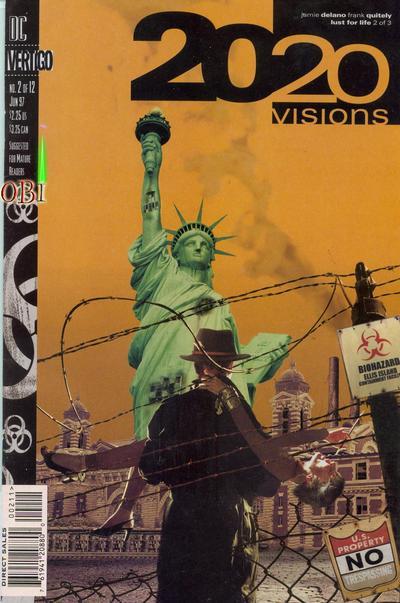




2020 Visions
Vol 1 1-6
1997
Writers: Jamie Delano
Pencils: Frank Quitely, Warren Pleece
Inks: Frank Quitely, Warren Pleece
Covers: Karen Berger, John Eder
8 notes
·
View notes
Note
henlo! I watched justice league dark recently and kinda fell in love with stinky magic man aka constantine, do you have any recommendations for where to start reading his comics please and thank you <3
Hello friend! I love the justice league dark movie. I’m a firm believer in the DCAU JLD to Hellblazer stan pipeline 😌
Anyway, John’s first appearance is in Swamp Thing (1982) #37. I’d read all the way to number 50, bc this arc, American Gothic is both really cool and pretty important, and serves as a precursor to Hellblazer. He also pops up sporadically throughout the Sandman starting at issue 3, but I’m not an expert there.
Then, you can start his original solo, my absolute favorite series ever, Hellblazer (1988). I could do a more in-depth dive into walking you through reading Hellblazer for the first time but that can get wordy and overwhelming really fast. Jaime Delano wrote issues 1-39, and I especially recommend 1-11. Then Garth Ennis came on board and changed my entire life lol. Issues 40-84 are amazing trust me on that. I also enjoy everything up to 120, Jenkins’s work, but shortly after we got Warren Ellis. In essence you can read as much of Hellblazer as you want, but these stretches are my personal favorite.
Around 2011 DC also brought a version of Constantine into the main universe. He’s NOT the Hellblazer, so the comics under that version don’t really resemble Hellblazer lore because of rating changes/ intended audience. Runs from this era are Constantine and Justice League Dark Vol. 1. I’ve read all of JLD 1 and that team line up most closely resembles the movie.
Afterwards, there were a few more solo series, like Constantine: the Hellblazer, and Rebirth Constantine. Still DC’s version of Constantine. Bear with me I know it’s confusing lol.
We got JLD vol 2, which I really recommend. It’s more approachable for new readers without butchering John too much, and there’s a few john and zatanna crumbs! I really like this series and own a few trade paperbacks.
There’s also The Sandman Universe Presents: The Hellblazer, which is GREAT. Read this after you’re satisfied with how much OG Hellblazer you’ve read.
If you need any more help, or have questions, don’t hesitate to drop in! I left this kinda brief for clarity. John Constantine revived my faith in comics as an art form and I’d die for him lol and I’m trying to recruit others
4 notes
·
View notes